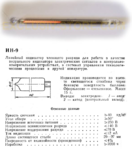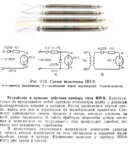schmitt trigger
Advanced Member level 5

I found this item on EBAY, which looks very intriguing.
It is essentially a bargraph Nixie.
Although the specs are in Russian, I believe that the lowest bargraph range is 140V, the highest is 250V, and that at that particular level, the current should be limited to 12 mA. See attached photos.
But of course, not able to read Russian, I may be understanding everything wrong.
I would appreciate if any Russian speaking forum member would help with the translation.


It is essentially a bargraph Nixie.
Although the specs are in Russian, I believe that the lowest bargraph range is 140V, the highest is 250V, and that at that particular level, the current should be limited to 12 mA. See attached photos.
But of course, not able to read Russian, I may be understanding everything wrong.
I would appreciate if any Russian speaking forum member would help with the translation.






